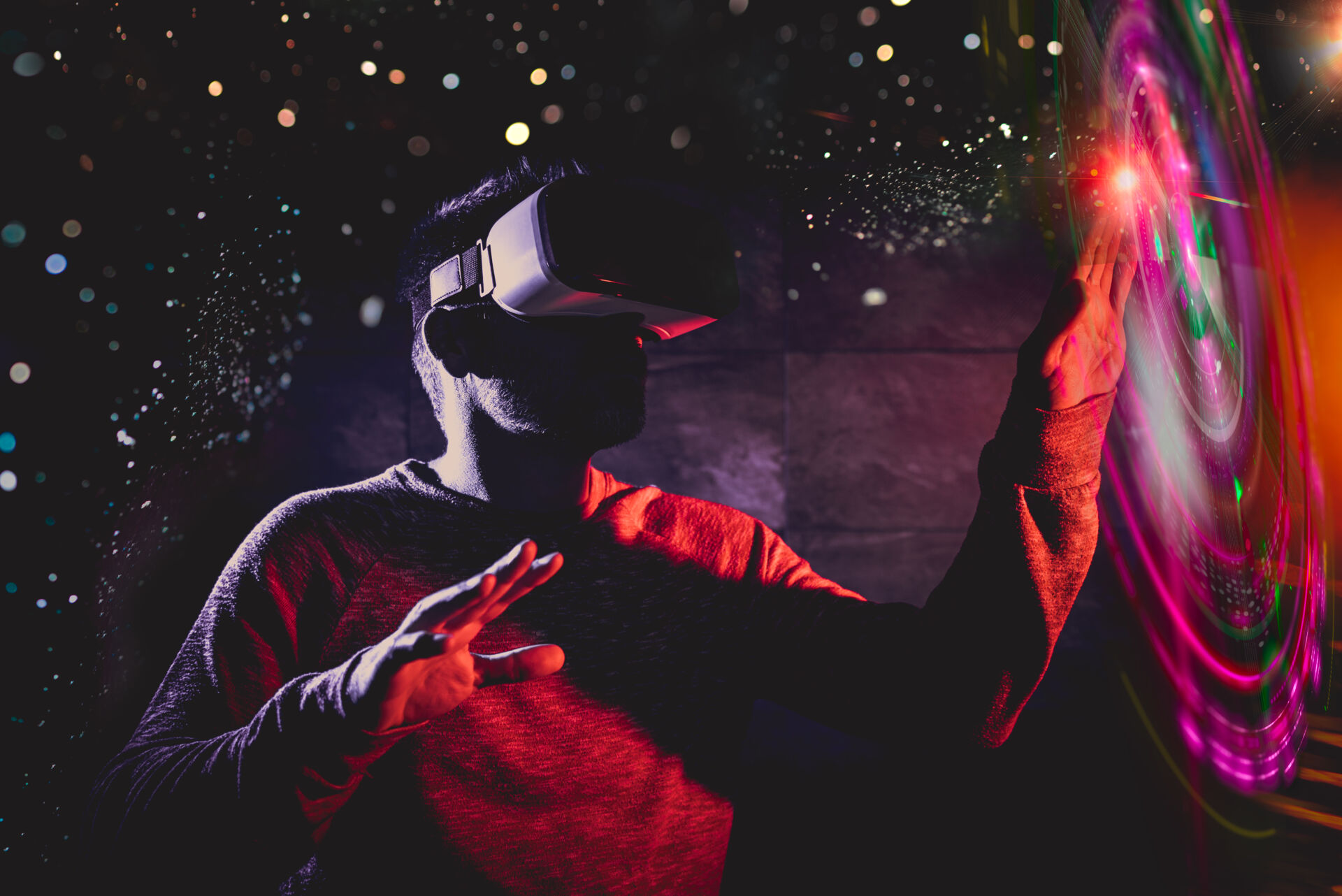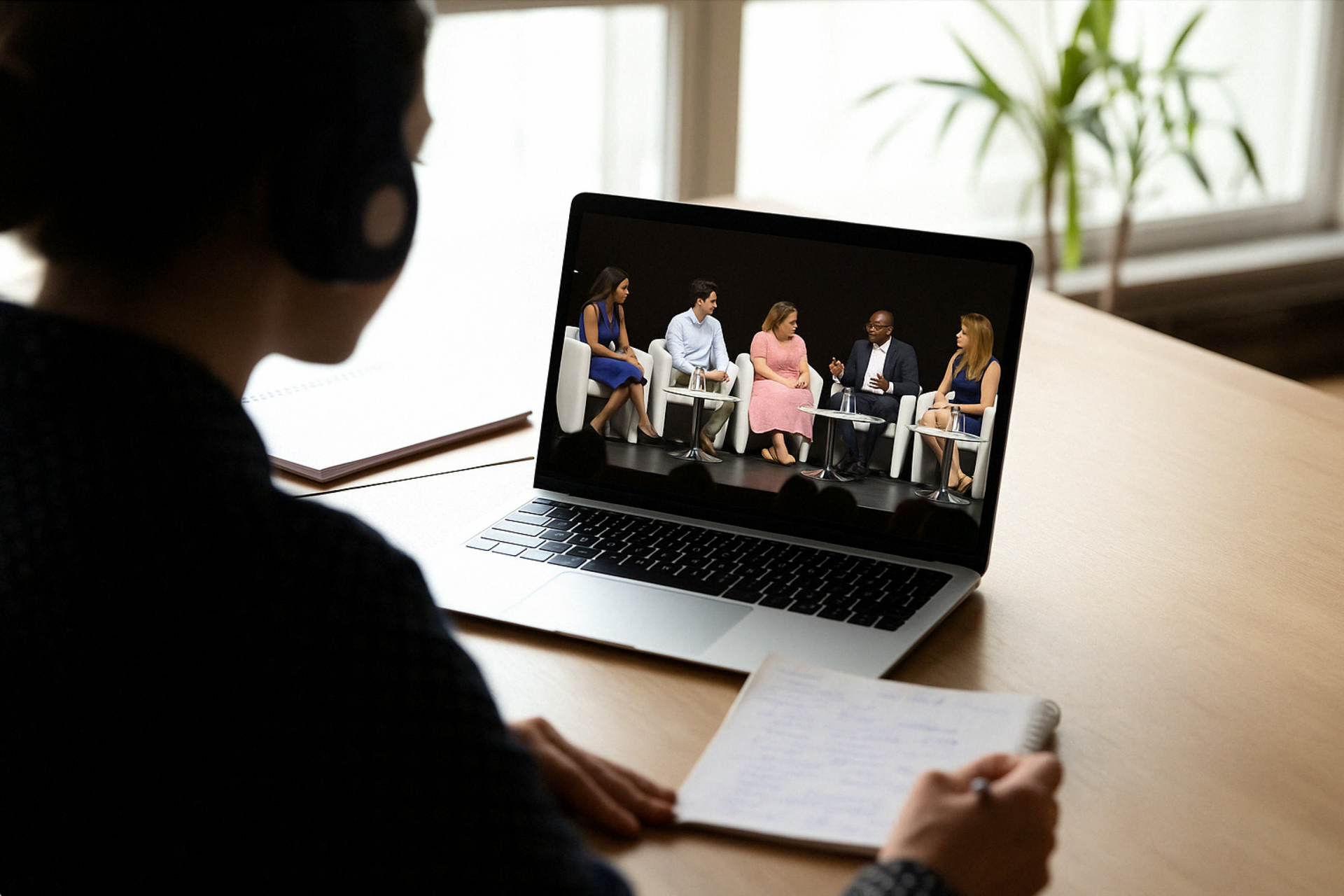
The power of advanced technology: AR, VR and immersive storytelling
There is no denying the impact that advanced tools, such as augmented reality (AR), virtual reality (VR) and holographic displays, can have when seamlessly woven into an event’s narrative. Pierce notes that modern audiences are increasingly open to immersive digital experiences, and when these are carefully integrated, they can both excite attendees and drive home key messages.
A strong example is a large-scale investor meeting MCI produced in New York. Eager to position itself as a forward-thinking, tech-driven company, the client showcased cutting-edge demonstrations in themed areas, holographic presentations on the main stage and interactive spaces that emphasised technological progress. “They wanted to communicate: ‘We’re moving into a new era, and here’s proof,’” says Pierce. By synchronising the high-tech elements with a consistent brand story, MCI ensured that the event felt cohesive and genuinely innovative – rather than a set of cool-but-disconnected tech gimmicks.
But Pierce warns that authenticity is crucial: “If I go to an event that just scatters tech around for no purpose, it feels forced. It needs to fit with the brand or the content.” When technology directly illustrates a company’s journey or brings complex concepts to life, it transforms a gathering into a conversation-sparking experience that resonates.
Not every client is ready for dramatic innovation, and Bagge stresses the importance of reading the room: “We’ve learnt to gauge where the client is in their journey. Some want bold ideas immediately, while others need a more conventional approach with small but meaningful twists.”
Sometimes rolling back tech can be the most innovative solution. Bagge cites an event produced for a pharmaceutical company where the goal was to reconnect employees and leadership and overcome silos. “So we took away the app, took away the PowerPoint slides, extended networking breaks – everything was face-to-face,” she recalls. By eliminating digital distractions, the event emphasised real conversation and human bonding, leaving a more lasting impression.

Hybrid formats and global reach
Hybrid events should not attempt to replicate the in-person experience one-to-one for online attendees. Pierce observes that, during and immediately after the pandemic, many organisers tried to weave in-person and online into a single, simultaneous experience. However, what the market now demands – at least in the United States – is more selective use of digital. In his words, instead of creating a “parallel” event, we focus on optimising each format for what it does best.
For example, certain aspects of an event (like a keynote) can be live streamed or offered as near-real-time content to remote audiences, whereas features such as trade show floors may not translate well virtually. Pierce also suggests using online content to build anticipation or “FOMO” (fear of missing out), rather than aiming to mirror every physical aspect. This means harnessing social media snippets, official streams and user-generated content to highlight what is happening on-site, yet accepting that the full immersive, in-person experience cannot be duplicated for remote viewers.
This can ensure a memorable event for audiences wherever they are located. But for a global event, managing in-person audiences means addressing diverse cultures, legalities and logistical challenges. “Even countries located near each other can have different norms, such as expected dinner times,” Pierce notes. The key is to unite local know-how with consistent global quality in order to ensure both the brand message and attendee experience align seamlessly in any region. This is where it’s useful to partner with a global agency. At MCI, our “glocal” approach means that when a client from the USA wants to host an event in Dubai, for instance, the Account Executive from MCI USA teams up with the local experts at MCI UAE office.

Personalising experiences for deeper engagement
Bagge sees pre-event planning and communications as a critical part of the process. “We plan the communications well in advance,” she explains. “By the time guests arrive, they already feel involved in something special.” For example, we can pose a fun question during registration (“How do you take your coffee?”) and use this information to deliver a surprise on-site. These small but meaningful moments instantly signal that the event is designed around the attendee.
Personalisation can in fact be served at every stage of the attendee journey, thanks to the wealth of data now available through membership systems, social media and online footprints. Pierce describes how MCI ethically leverages these insights to recommend session tracks and agenda items: “We can show attendees that we understand who they are by suggesting a schedule tailored to their background and interests.”
Balancing creativity with operational excellence
All the clever ideas and personal touches in the world won’t matter if the event falls flat logistically. Rising costs, travel disruptions, political instability and sudden legislative changes can throw even the best-laid plans into disarray, so a laser focus on practical preparedness is essential. “It’s important to be agile,” says Bagge. “Senior leaders might change their event message last minute, or certain groups might be restricted from travelling because of visa issues. We need to pivot quickly.”
Operational excellence extends to sustainability and supply chain management. Pierce explains how AI-driven “agents” can track disruptions and waste in real time, feeding data back into a sustainability code of conduct. “We’re actively building redundancy into supply chains and working with suppliers who meet our sustainability standards. It’s not just about being green – it’s about ensuring continuity of products. If you’re relying on foam core boards from overseas, for instance, you need a backup plan if they’re delayed. Better still if you have local experts on hand who can source everything locally.”
And of course, a solid crisis management plan is essential. “Before every event, we create an emergency handbook detailing what steps to take in every eventuality, from a medical emergency to a safety threat, or if the President’s motorcade suddenly shuts down the street where buses were meant to drop off attendees,” says Pierce. MCI’s teams collaborate with local law enforcement and city officials for large-scale or city-wide events, ensuring they have direct lines to emergency services if needed. “It’s event planning 101, but it’s surprising how many overlook it.”

Proving ROI – and beyond
Memorable events need to be stand-outs for clients as well as attendees, and clients want more than anecdotal evidence that an event went well. They need numbers, insights and an understanding of how the experience contributed to broader strategic objectives. We can tackle this through post-event surveys, analytics dashboards, sentiment scoring and more.
“One of our in-house capabilities is our Jade AI tool,” says Pierce. “It lets organisers literally ‘ask’ their data questions in real time, like ‘What’s the profile of my audience who registered in the last four weeks?’ That’s so much better than waiting on a static report. It also supports sentiment analysis, scanning social media to catch real-time reactions so we can tweak things on the fly.”
Besides ROI, Pierce references broader metrics like Return on Engagement (ROE), Return on Experience (ROX) and Return on Opportunity (ROO): “People can stay home and do online training, so if they choose to invest in travelling and taking time away, they want something they can’t get virtually. We measure how they felt about the experience, not just whether they turned up.” In other words, the best events strike a balance between tangible numbers – for procurement and leadership – and intangible resonance.
When it comes to the ROI of partnerships, a commitment to long-term partnerships will add the value of continuity. “From a financial perspective, working with an agency you can build a long-term relationship with will yield real budgetary advantages,” Bagge says. “Not only is it cost-effective, but with long-term relationships, we’re able to carry forward all the lessons, data and feedback from previous years. That cumulative knowledge makes each subsequent event even stronger, but you can’t expect the same from every agency; they have to have the bigger picture in their sights and want to play the long game with the client or there is no commitment to learning and getting better.”
Crafting a lasting legacy
“It doesn’t end when the last person leaves,” Bagge observes. “it’s easy to forget about follow-up communications, smaller post-event workshop sessions or one-on-one conversations that continue the momentum.” It is best to view a gathering as one milestone in a broader campaign. Ongoing newsletters, social media updates and repeated check-ins can sustain the sense of community that first bloomed on-site, and create anticipation for the next event.
Pierce notes that this continuous engagement can be a game-changer in building loyalty. “You want to be part of the community’s conversation year-round, not just for a few days. If we see from sentiment analysis that attendees are clamouring for more knowledge on a topic, why not host a smaller, targeted follow-up event or a webinar?” By extending the narrative beyond the event itself, clients can keep the conversation fresh and nurture brand affinity well into the future.

From first idea to final result
“People won’t forget how they felt,” says Bagge. “Whether that’s down to meaningful education on a topic that resonates, being personally engaged by a speaker or simply feeling part of a larger cause, it’s that emotional take-away that sticks.” And when you combine human-centric design with flawless logistics, advanced data insights and holistic planning, you can deliver a unique experience that genuinely stands out in a crowded field.
Our clients benefit from our decades of experience, long-term relationships, cost efficiencies, global best practices and deep local insights, whether they are hosting a small leadership workshop or a multinational, city-wide event. It is this blend of creativity, customisation and operational mastery that forges an innovative, memorable event – the kind that delivers true, measurable value and keeps attendees returning year after year.
Let’s partner on your next unforgettable experience. Call MCI today.




